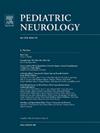Predictors of Seizure Outcome After Epilepsy Surgery in Pediatric Patients With Low-Grade Developmental and Epilepsy-Associated Brain Tumors
IF 2.1
3区 医学
Q2 CLINICAL NEUROLOGY
引用次数: 0
Abstract
Background
Low-grade developmental and epilepsy-associated brain tumors (LEATs) are common causes of childhood-onset drug-resistant focal epilepsies. Although epilepsy surgery shows favorable outcomes in most patients, approximately 20%-30% of them do not become seizure free. This study aimed to identify predictors of postoperative outcomes and seizure recurrence, either spontaneously or after antiseizure medication (ASM) tapering, in a pediatric cohort with LEATs.
Methods
This retrospective cohort study included pediatric patients with LEAT-associated epilepsy who underwent preoperative evaluation and epilepsy surgery at the Medical University of Vienna pediatric epilepsy center from 1993 through 2023. We analyzed the impact of clinical and demographic parameters on spontaneous- or ASM-reduction-related seizure recurrence.
Results
In total, 82 patients were included. The median age at surgery was 10.2 years (interquartile range [IQR], 5.3-14.0) and the median follow-up was 60 months (IQR, 36-120); 74.4% of patients became seizure free. ASM discontinuation was successful in 80% of cases. Despite incomplete resections being the strongest predictor of unfavorable outcomes at final follow-up (odds ratio, 53.5; 95% confidence interval = 8.5-337.1; P < 0.001), 33% of patients with unfavorable outcomes had undergone complete resections. These patients had a significantly longer epilepsy duration before surgery than those with incomplete resections and unfavorable outcomes (84.1 vs 12.9 months; P = 0.02).
Conclusions
Complete tumor resection is essential in patients with LEATs. However, especially in patients with longer epilepsy duration, the epileptogenic zone may exceed the epileptogenic lesion, and exclusive resection of the tumor may therefore not be sufficient to achieve seizure freedom. This fact underscores the importance of early preoperative evaluation.
小儿低度发育性及癫痫相关脑肿瘤患者癫痫手术后癫痫发作结局的预测因素
背景:低度发育性和癫痫相关脑肿瘤(LEATs)是儿童期发病的耐药局灶性癫痫的常见病因。虽然癫痫手术在大多数患者中显示出良好的结果,但大约20%-30%的患者并没有完全摆脱癫痫发作。本研究旨在确定leat儿童队列术后结局和癫痫复发的预测因素,无论是自发的还是在抗癫痫药物(ASM)逐渐减少后。方法本回顾性队列研究纳入1993年至2023年在维也纳医科大学儿童癫痫中心接受术前评估和癫痫手术的leat相关癫痫患儿。我们分析了临床和人口学参数对自发性或asm减少相关癫痫复发的影响。结果共纳入82例患者。手术时中位年龄为10.2岁(四分位数差[IQR], 5.3-14.0),中位随访时间为60个月(IQR, 36-120);74.4%的患者癫痫消失。80%的病例ASM停药成功。尽管不完全切除是最终随访中不良结果的最强预测因子(优势比,53.5;95%置信区间= 8.5-337.1;P & lt;0.001), 33%预后不良的患者接受了完全切除。这些患者在手术前癫痫持续时间明显长于切除不完全且预后不良的患者(84.1个月vs 12.9个月;P = 0.02)。结论对leat患者进行肿瘤完全切除是必要的。然而,特别是在癫痫持续时间较长的患者中,致痫区可能超过致痫病变,因此仅切除肿瘤可能不足以实现癫痫发作自由。这一事实强调了早期术前评估的重要性。
本文章由计算机程序翻译,如有差异,请以英文原文为准。
求助全文
约1分钟内获得全文
求助全文
来源期刊

Pediatric neurology
医学-临床神经学
CiteScore
4.80
自引率
2.60%
发文量
176
审稿时长
78 days
期刊介绍:
Pediatric Neurology publishes timely peer-reviewed clinical and research articles covering all aspects of the developing nervous system.
Pediatric Neurology features up-to-the-minute publication of the latest advances in the diagnosis, management, and treatment of pediatric neurologic disorders. The journal''s editor, E. Steve Roach, in conjunction with the team of Associate Editors, heads an internationally recognized editorial board, ensuring the most authoritative and extensive coverage of the field. Among the topics covered are: epilepsy, mitochondrial diseases, congenital malformations, chromosomopathies, peripheral neuropathies, perinatal and childhood stroke, cerebral palsy, as well as other diseases affecting the developing nervous system.
 求助内容:
求助内容: 应助结果提醒方式:
应助结果提醒方式:


